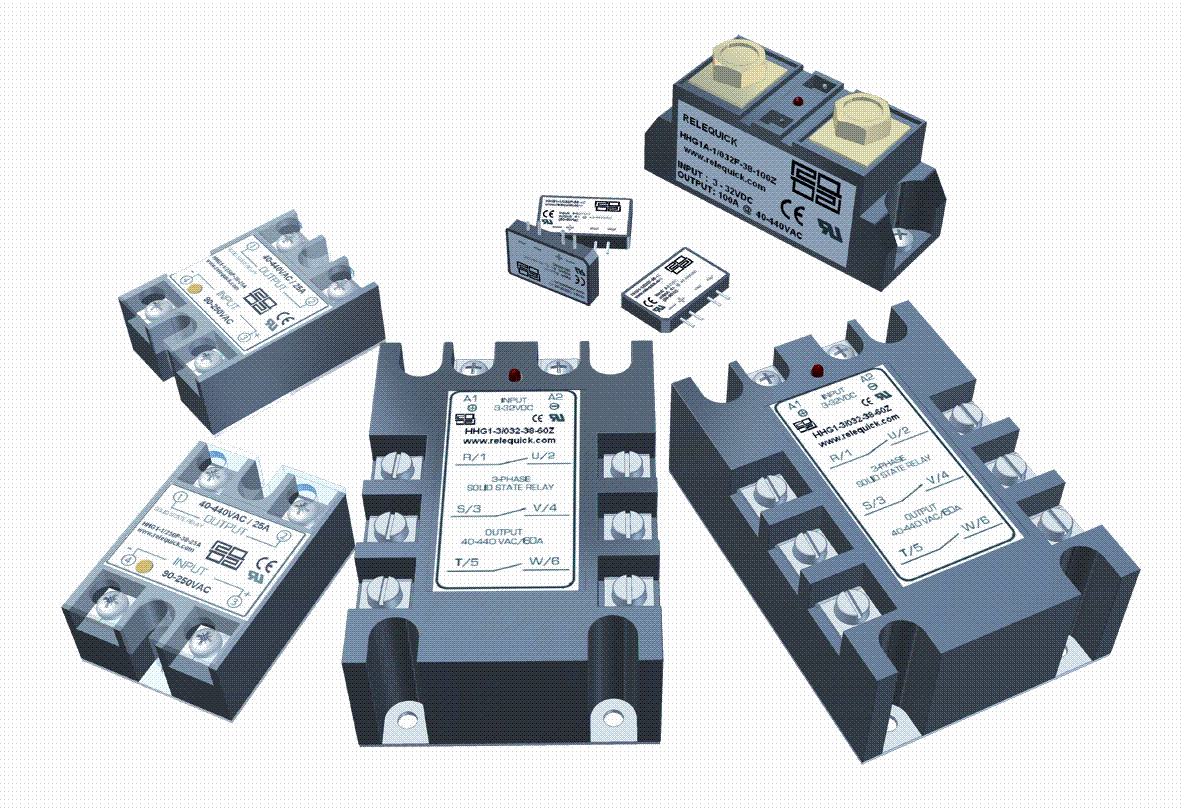A relay is an electromagnetic switch that can open and close circuits electromechanically or electronically. You need a relatively small current to operate a relay. Usually, they are used to regulate low currents in a control circuit. However, you can also use relays to control high electric currents. A relay is the electrical equivalent of a lever. You can switch it on with a small current to turn on (or leverage) another circuit using large current. Relays are either electromechanical relays or solid-state relays.

1. Composition
An Electromechanical Relay (EMR) comprises a frame, coil, armature, spring, and contacts. The frame supports various parts of the relay. The armature is the moving part of a relay switch. A coil (mostly copper wire), wound around a metal rod generates a magnetic field that moves the armature. Contacts are the conducting parts that open and close the circuit.
A Solid-State Relay (SSR) consists of an input circuit, a control circuit, and an output circuit. The input circuit is the equivalent of a coil in an electromechanical relay. The control circuit acts as a coupling device between input and output circuits, while the output circuit performs the same function as the contacts in an EMR. Solid-state relays are becoming increasingly popular as they are cheaper, faster, and reliable compared to electromechanical relays.
B. How Does It Work?
Whether you are using an electromechanical relay or a solid-state relay, it is either a Normally Closed (NC) or a Normally Opened (NO) relay. In case of an NC relay, the contacts remain closed when there is no power supply. However, in a NO relay, the contacts remain open when there is no power supply. In short, whenever current flows through a relay, the contacts will either open or close shut.
In an EMR, power supply energizes the relay coil, creating a magnetic field. The magnetic coil attracts a ferrous plate mounted on the armature. When the current stops, the armature is released into its resting position by spring action. An EMR can also have single or multiple contacts within a single package. If a circuit uses only one contact, it is called a Single Break (SB) circuit. A Double Break Circuit (DB), on the other hand, comes with tow contacts. Usually, single break relays are used to control low power devices such as indicator lamps, while double break contacts are used to regulate high-power devices such as solenoids.
When it comes to operating an SSR, you need to apply a voltage higher than the specified pickup voltage of the relay to activate the input circuit. You have to apply a voltage less than the stipulated minimum dropout voltage of the relay to deactivate the input circuit. Control circuit transfers the signal from the input circuit to the output circuit. The output circuit switches on the load or performs the desired action.
C. Function and Significance
As they can control a high current circuit by a low current signal, most control processes use relays as the primary protection and switching devices. They can also detect fault and irregularities occurring in the power distribution systems. Typical applications include telecommunication, automobiles, traffic control systems, home appliances, and computers among others.
Protective Relays
Protective relays are used to trip or isolate a circuit if any irregularities are detected. Sometimes, they can also set off alarms when a fault is detected. Types of protection relays depend on their function. For example, an overcurrent relay is designed to identify the current exceeding a predetermined value. When such current is detected, the relay operates tripping a circuit breaker to protect the equipment from potential damage.
A distance relay or impedance relay, on the other hand, can detect abnormalities in the ratio of current and voltage rather than monitoring their magnitude independently. It swarms into action when the V/I ratio falls below a predetermined value. Usually, protective relays are used to protect equipment such as motors, generators, and transformers, and so on.
Automatic Reclosing Relay
An automatic reclosing relay is designed to cause multiple reclosures of a circuit breaker that is already tripped by a protective relaying. For example, when there is a sudden voltage drop, the electrical circuit in your home may experience several brief power outages. These outages occur because a reclosing relay is trying to switch on the protective relay automatically. If it succeeds the power supply will be restored. If not, there will be a complete blackout.
Thermal Relays
The thermal effect of electrical energy is the working principle of a thermal relay. In short, it can detect the rise the ambient temperature and switch on or off a circuit accordingly. It consists of a bimetallic strip which heats up if an overcurrent passes through it. The heated strip bends and closes the No contact, tripping the circuit breaker. The most common application of thermal relay is overload protection of electric motor.
Related Posts:
